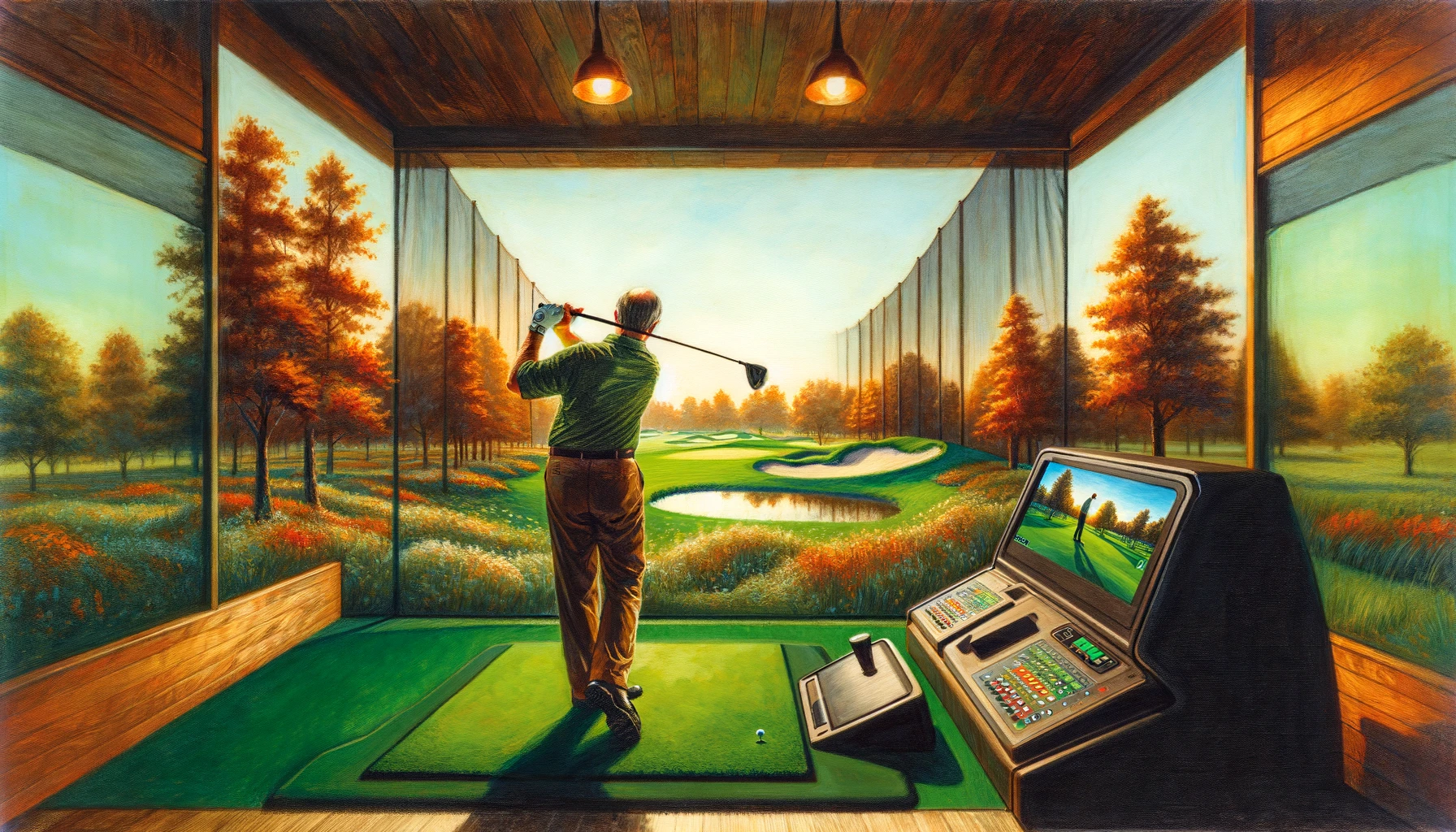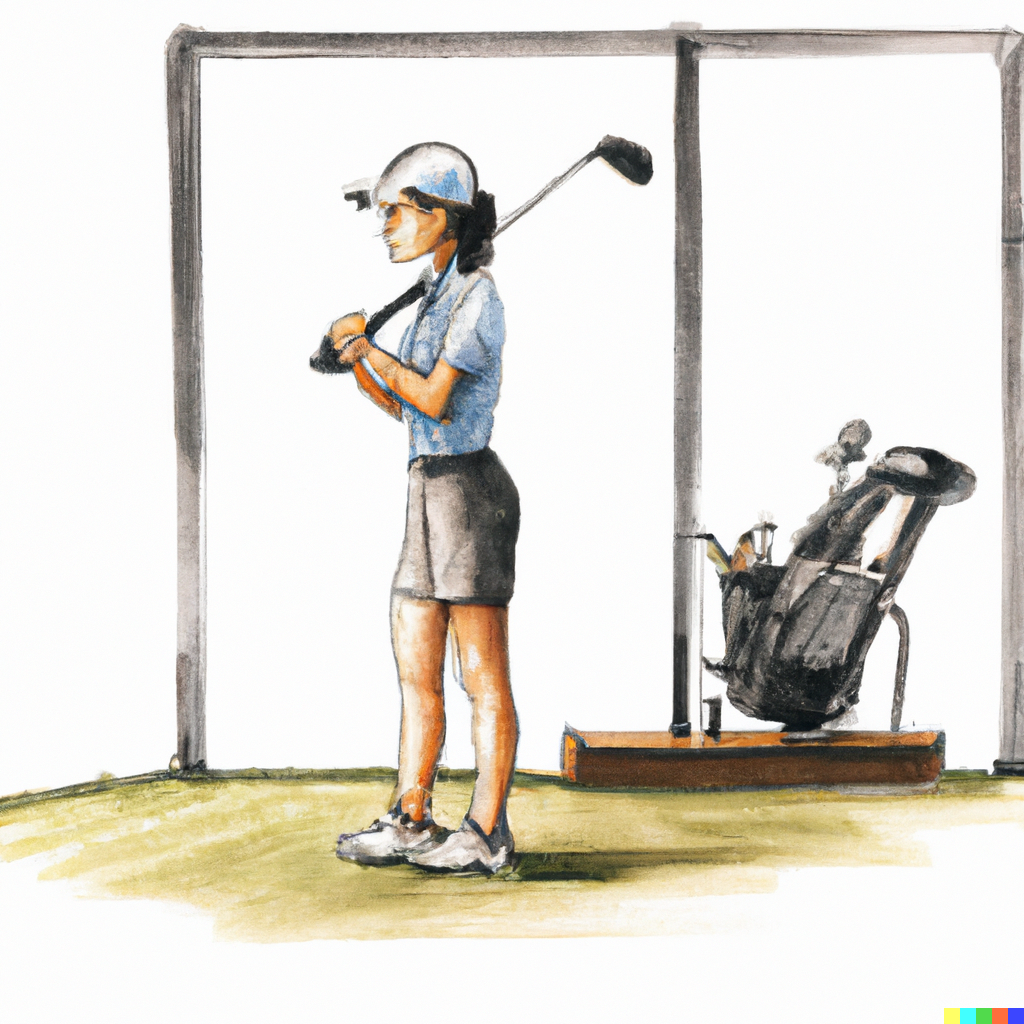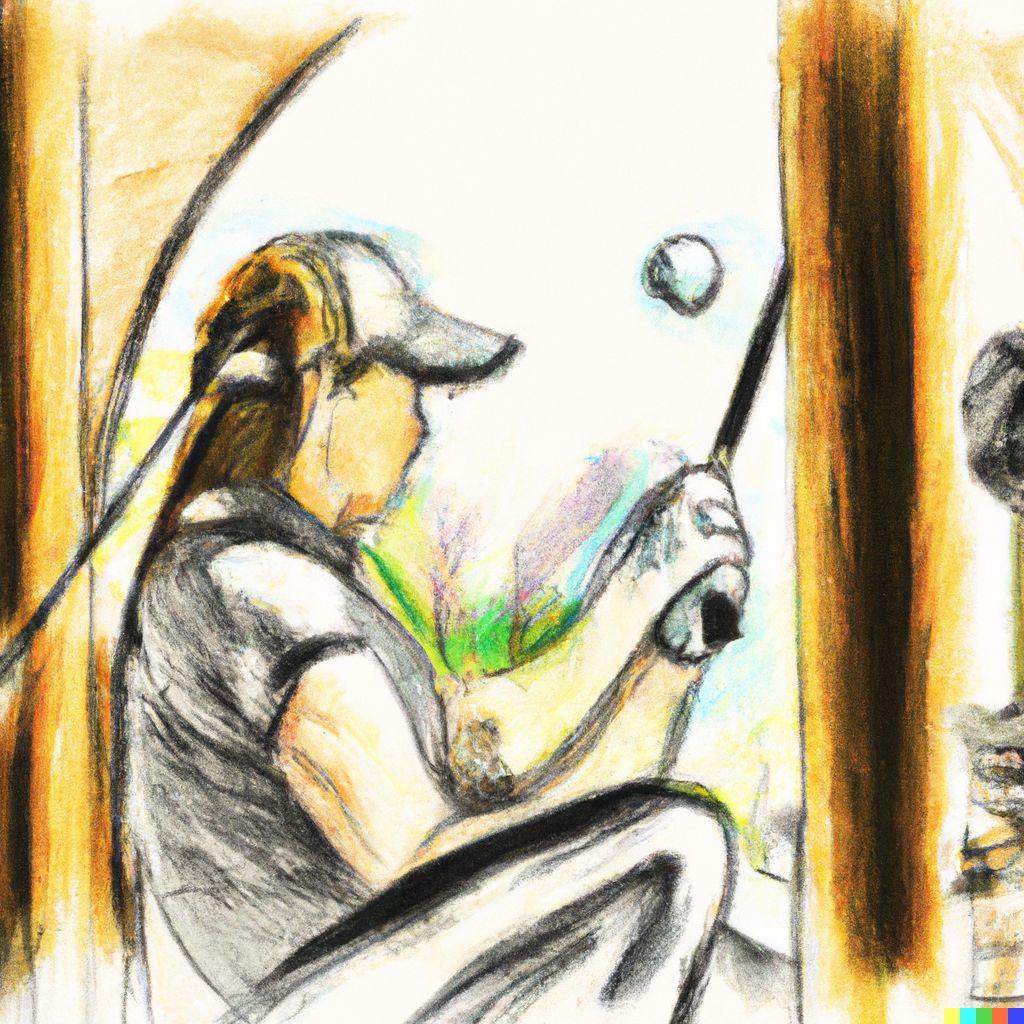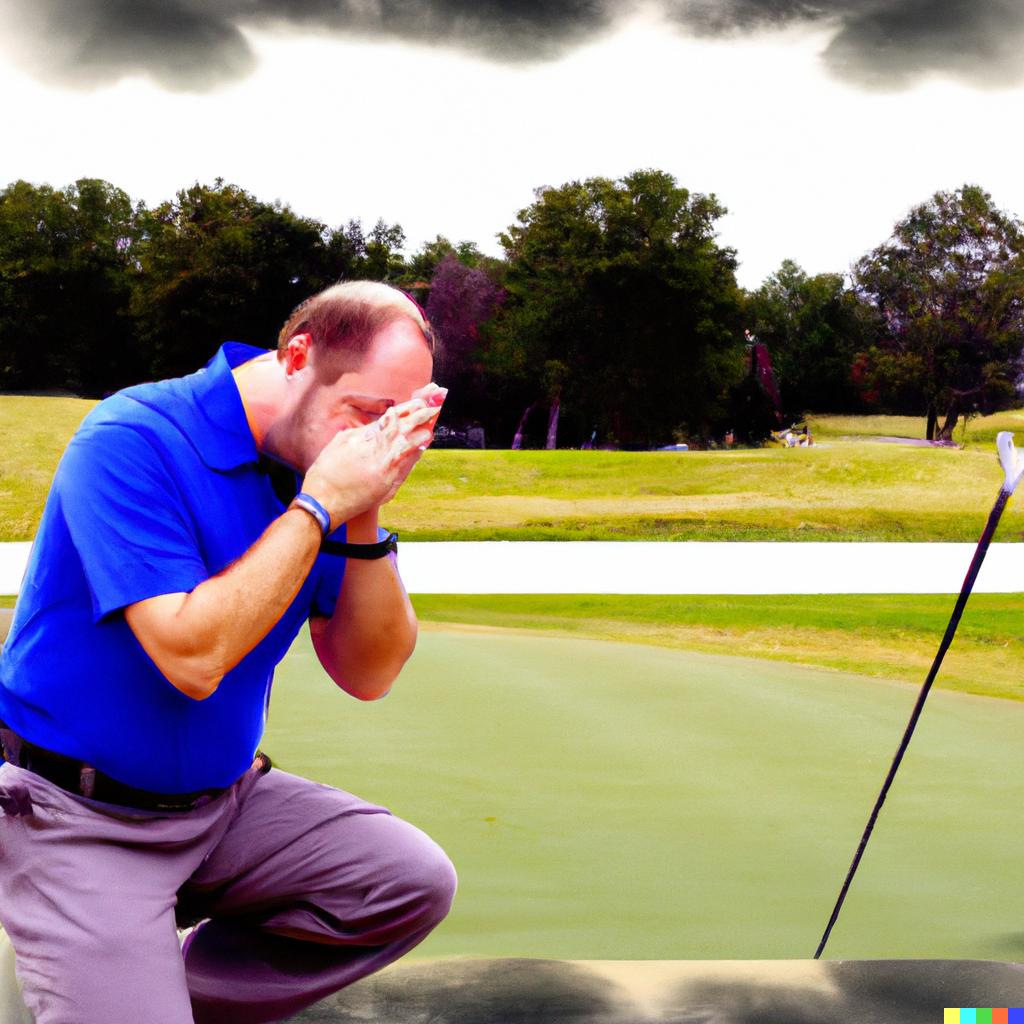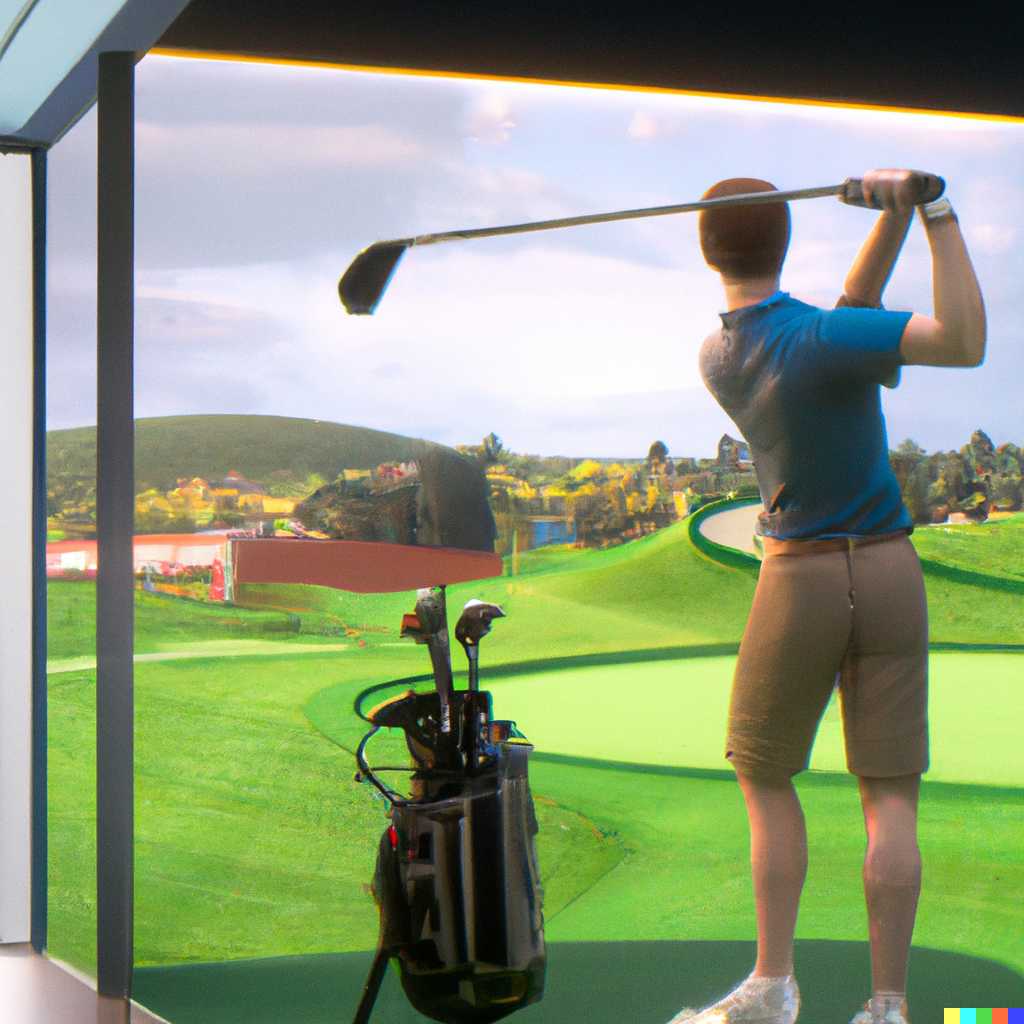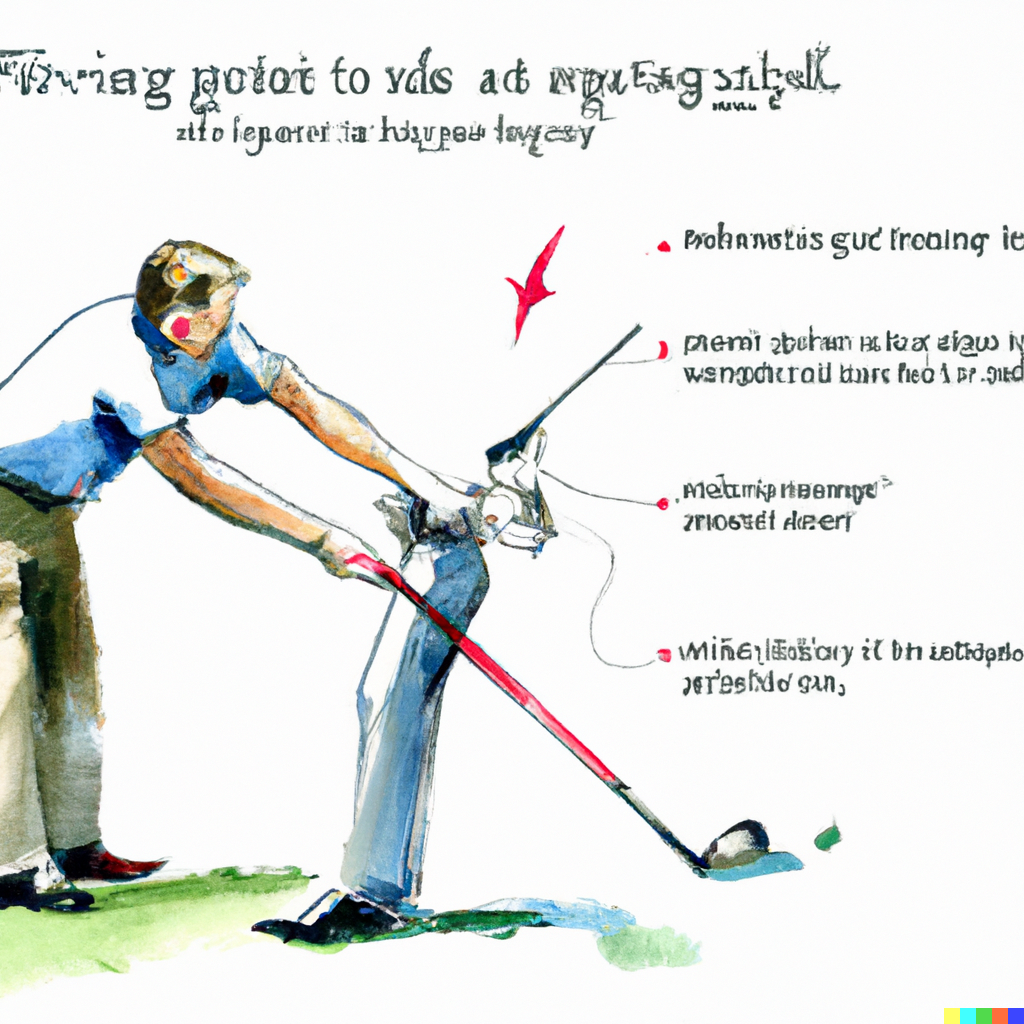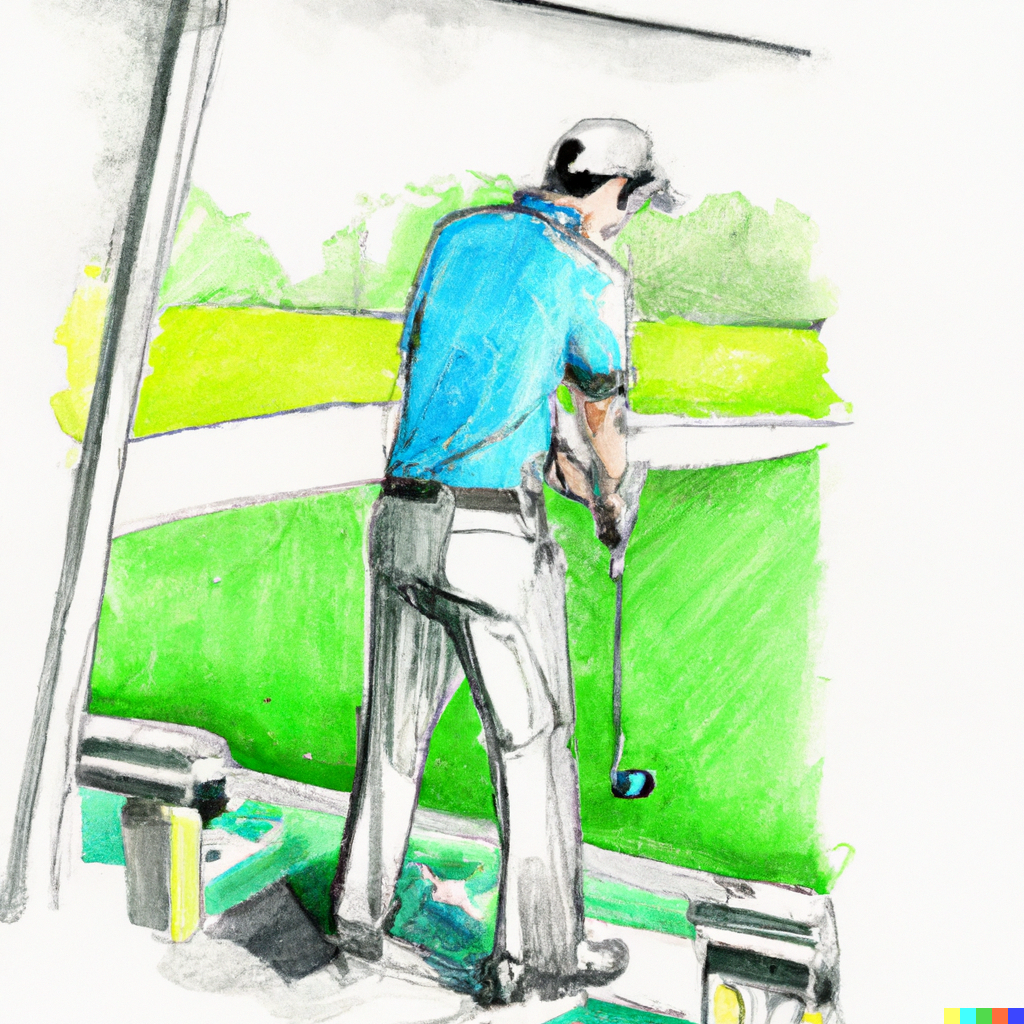- Home
- Golf Simulators
- Golf Simulator
Golf Simulators: Your Secret to Year-Round Golf Improvement
Picture this: It's December, there's three feet of snow outside, and you're about to tee off at Pebble Beach. No, you haven't lost your mind - you've discovered the game-changing world of golf simulators. For us weekend golfers who dream of consistent improvement but battle weather, time constraints, and that nagging fear of embarrassing ourselves at the crowded driving range, simulators might just be the secret weapon we've been searching for.
I remember my first time stepping into a golf simulator. I was skeptical - how could hitting into a screen possibly help my game? But after spending just 30 minutes analyzing my swing data and playing a virtual round at St. Andrews, I walked out feeling like I'd just unlocked a cheat code for golf improvement. The detailed feedback showed me exactly why my drives were slicing, and for the first time, I had concrete data to work with instead of just hoping for the best.
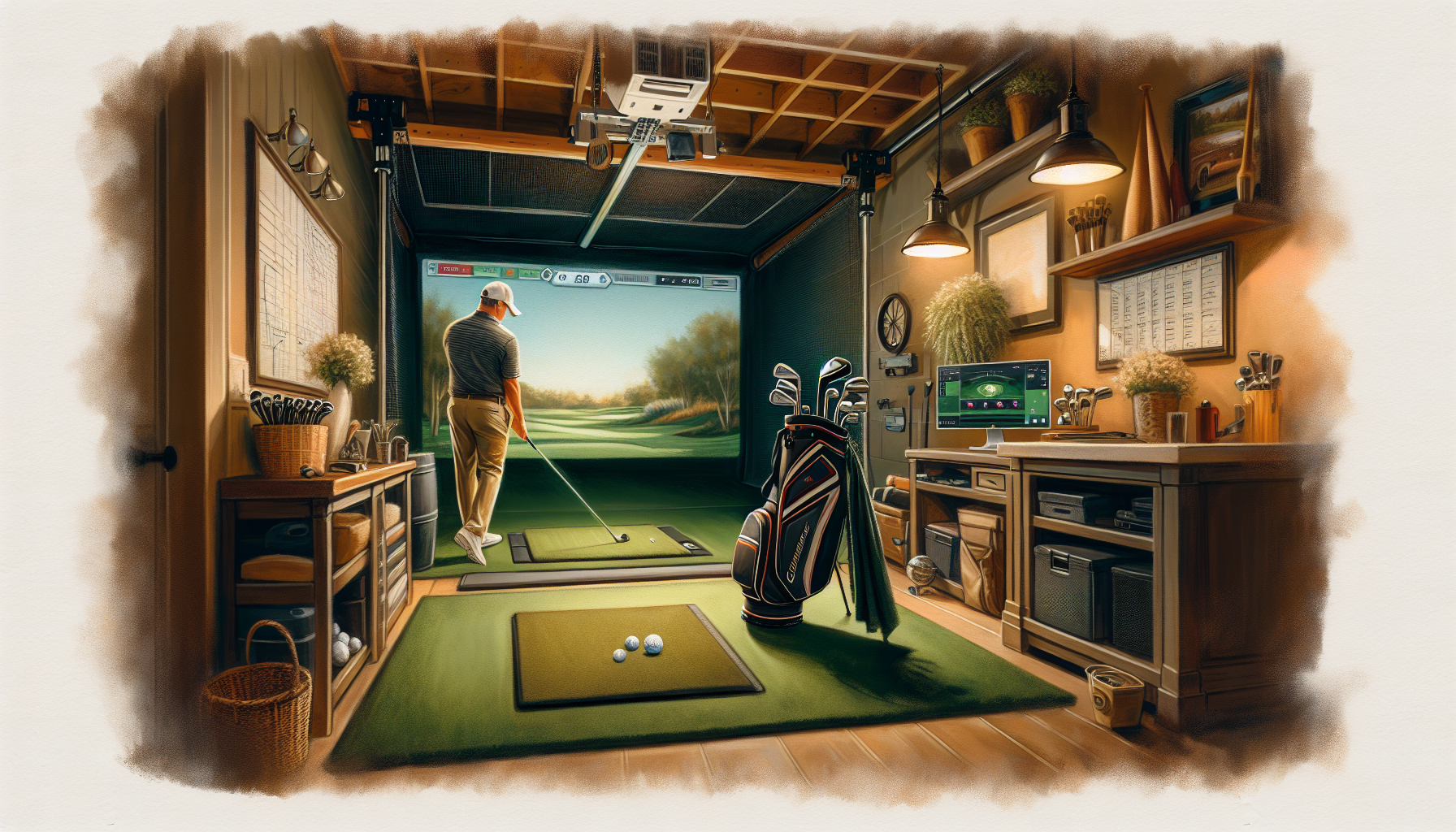 Your garage could become the ultimate golf training facility with the right simulator setup.
Your garage could become the ultimate golf training facility with the right simulator setup.What Exactly Is a Golf Simulator?
A golf simulator is kinda like having a professional golf instructor, launch monitor, and access to the world's best courses all rolled into one incredible package. These systems use advanced cameras, radar, or infrared sensors to track your club and ball data with almost uncanny accuracy. When you swing, the technology captures everything - ball speed, launch angle, spin rate, club path - then projects a realistic ball flight onto a screen showing where your shot would land on actual golf courses.
Modern simulators have come a long way from those clunky arcade-style machines you might remember. Today's systems can measure over 20 different data points per shot and offer access to hundreds of courses. The best golf simulators can tell you more about your swing in one session than you'd learn in months of casual range sessions.
But here's what really sets simulators apart: they eliminate the guesswork. No more wondering if that drive actually went 250 yards or just looked long because of the lighting. No more leaving the range feeling confused about whether you're improving or getting worse. The data doesn't lie, and that's incredibly valuable for weekend golfers who want to maximize their limited practice time.
🎯 Key Simulator Benefits
- ⭐ Practice 365 days a year regardless of weather
- ⭐ Get instant feedback on every swing with precise data
- ⭐ Play world-famous courses from your garage
Why Weekend Golfers Are Going Crazy for Simulators
Let's be honest - most of us weekend golfers face the same frustrating challenges. We love the game, but we're battling inconsistency, limited practice time, and that annoying voice in our head that says we're not good enough to be taking up space on the course. Simulators address almost every one of these pain points in ways that traditional practice simply can't match.
The year-round practice aspect alone is a game-changer. Research shows that Golf Digest experts consistently point to simulators as valuable tools for maintaining and improving skills during off-seasons. Instead of losing months of progress every winter, you can actually come back in spring with a better swing than when you left.
Getting better at golf requires consistent practice, but simulators make that practice incredibly efficient. You're not wasting time collecting balls or waiting for others to finish. Every swing provides immediate, actionable feedback. I've seen weekend golfers drop 5-7 strokes off their handicap in a single winter of simulator practice.
The confidence factor can't be overstated either. There's something almost magical about being able to practice without judgment. No one's watching you shank shots into the parking lot. You can work on golf swing tips and experiment with different techniques without the pressure of holding up a foursome behind you.
Types of Golf Simulators: Finding Your Perfect Match
Golf simulators range from budget-friendly portable units that cost less than a decent set of irons to full-room installations that rival professional training facilities. Understanding the different categories helps you find the sweet spot between performance and budget.
Portable Launch Monitors: These compact devices like the Rapsodo MLM2Pro or SkyTrak offer excellent value for weekend golfers. They're perfect for golf training sessions in your garage or basement. While they may not have the full-room immersion of premium systems, they provide professional-level swing data and access to thousands of virtual courses.
Mid-Range Home Systems: This category includes popular options like the Foresight GC3 or Uneekor EYE MINI. These systems offer the perfect balance of accuracy, features, and affordability for serious weekend golfers. They typically include advanced club and ball tracking, realistic graphics, and enough course variety to keep things interesting for years.
Premium Commercial-Grade Systems: At the high end, you'll find systems from companies like TrackMan and Full Swing that are used by PGA professionals. While expensive, these offer unmatched accuracy and features that can transform your entire approach to golf improvement.
The key is matching the system to your goals and space. Are golf simulators worth it for every golfer? Absolutely, but the specific type depends on your commitment level and budget.
💡 Choosing Your Simulator
- 🎯 Budget: $500-$50,000+ depending on features
- 📏 Space: Minimum 9' ceiling, 12'x12' room
- 🎮 Features: Consider data needs vs. entertainment value
Space Requirements and Setup Considerations
One of the biggest misconceptions about golf simulators is that you need a mansion to house one. The truth is, most weekend golfers can create an effective simulator setup in a standard two-car garage or basement. The key is understanding the basic space requirements and working within them.
The golden rule for simulator spaces is the 9-12-12 formula: 9 feet minimum ceiling height, 12 feet of depth, and 12 feet of width. This gives you enough room to swing freely without fear of damaging your home or your clubs. Golf simulator for home installations work best when you can dedicate the space permanently, but many weekend golfers successfully use retractable systems that pack away when not in use.
Ceiling height is absolutely critical. I can't stress this enough - measure twice, buy once. A 6'2" golfer with a standard swing needs at least 9 feet of clearance, and that's cutting it close. If you're working with 8 feet or less, you'll need to look at modified setups or consider golf training aids instead of a full simulator.
The beauty of modern simulators is their flexibility. You don't need a dedicated room if you're clever about setup. Many weekend golfers create dual-purpose spaces that serve as workshops, game rooms, or home gyms when not being used for golf. Retractable screens and portable launch monitors make this completely feasible.
Lighting is another crucial factor that often gets overlooked. The space needs to be dark enough for good projection visibility but well-lit enough for safety and shot tracking. Most successful installations use adjustable lighting systems that can be dimmed for play and brightened for setup and maintenance.
The Technology Behind the Magic
Understanding how golf simulators actually work helps you appreciate why they're so effective for game improvement. At their core, these systems are incredibly sophisticated measurement devices that capture your swing and ball flight data with remarkable precision.
Most modern systems use one of three tracking technologies: camera-based, radar-based, or infrared sensors. Camera systems like those from Foresight Sports use high-speed cameras to photograph the ball and club at impact, measuring everything from club path to ball spin. Radar systems like TrackMan use Doppler technology to track the ball's entire flight path. Infrared systems use light barriers to detect ball speed and direction.
The data these systems collect is mind-blowing in its detail. We're talking about measurements like club face angle to within 0.1 degrees, ball speed accurate to 1 mph, and spin rates measured in real-time. For weekend golfers used to guessing about our swing mechanics, this level of feedback is revolutionary.
But here's where it gets really interesting: the software takes all this data and creates a physics-based simulation of where your ball would actually land on a real golf course. Modern systems account for wind, elevation changes, temperature, and even different grass types. When the system shows your drive landing in the rough at the 267-yard marker, that's not a guess - it's a scientifically calculated result based on your actual swing.
This accuracy is why improving your golf game with simulator practice translates so well to real-course performance. You're not just playing a video game; you're getting legitimate practice with immediate, accurate feedback.
📊 What Simulators Measure
- ⚡ Club head speed and ball speed
- 📐 Launch angle and club path
- 🌪️ Spin rate and axis tilt
How Simulators Actually Improve Your Game
The real magic of golf simulators isn't just in the technology - it's in how they fundamentally change the way you practice and understand your game. For weekend golfers who typically practice by hitting bucket after bucket with little direction, simulators provide structure and purpose that transforms random ball-beating into focused improvement sessions.
First, let's talk about the data revolution. When you can see that your 7-iron consistently flies 147 yards with a slight draw, you start making better decisions on the course. No more hoping and guessing about club selection. Knowing what golf club to use becomes scientific rather than emotional, and that alone can save you several strokes per round.
The instant feedback loop is incredibly powerful for motor learning. Traditional range practice often reinforces bad habits because you can't see exactly what's happening at impact. With simulator data, you immediately know if that shot that felt pure actually had an open clubface and sidespin. This accelerates the learning process dramatically.
But perhaps most importantly, simulators make practice actually fun. Instead of mindlessly hitting balls into a field, you're playing actual rounds on courses you've always dreamed of experiencing. Course management skills develop naturally as you navigate different layouts and conditions. You start thinking strategically about shot placement rather than just trying to hit it as far as possible.
According to research from leading golf instruction professionals, simulator practice is particularly effective for working on specific distances and shot shapes. You can spend an entire session dialing in your 50-yard wedge shots or learning to hit a reliable fade. Try doing that efficiently on a traditional driving range.
The mental game benefits can't be overlooked either. Simulators provide a safe space to work through golf psychology challenges without the pressure of other golfers watching. You can practice those pressure shots over and over until they become routine.
Budget-Friendly Options for Weekend Golfers
One of the biggest barriers keeping weekend golfers away from simulators is the perception that they're only for the wealthy. While it's true that top-end systems can cost more than a decent used car, there are legitimate options for almost every budget that can still provide significant game improvement benefits.
At the entry level, devices like the OptiShot2 or Rapsodo Mobile Launch Monitor can get you started for under $500. These systems won't give you the full immersive experience, but they provide valuable swing data and access to course play. For weekend golfers just looking to maintain their games during the off-season, these can be incredibly effective.
The sweet spot for most serious weekend golfers falls in the $2,000-$8,000 range. Systems like the SkyTrak, Bushnell Launch Pro, or Uneekor EYE MINI LITE offer professional-level accuracy at consumer-friendly prices. When you factor in the cost of range sessions, green fees, and travel to courses, many of these systems pay for themselves within a couple of years.
Playing golf on a budget doesn't mean you have to sacrifice quality practice. Many weekend golfers successfully build DIY simulator setups using budget projectors, impact screens from companies like Carl's Place, and mid-range launch monitors. With some creativity and basic handyman skills, you can create a highly functional setup for well under $10,000.
Don't forget about commercial simulators either. Many golf facilities, bars, and entertainment centers now offer simulator rentals by the hour. For around $30-50 per hour, you can access premium technology without the upfront investment. It's a great way to test different systems before making a purchase decision.
The key is being realistic about your needs versus wants. Do you need 4K graphics and 200+ courses, or would accurate data and 20-30 quality courses serve your improvement goals just as well? Budget-conscious golfers often find that mid-range systems provide 80% of the benefits at 40% of the cost.
💰 Budget Breakdown
- 💵 Entry Level: $500-$2,000 (basic data & courses)
- 💳 Mid-Range: $2,000-$8,000 (solid accuracy & features)
- 💎 Premium: $8,000+ (professional-grade everything)
Common Simulator Myths Debunked
As golf simulators have grown in popularity, so have the misconceptions surrounding them. Let's address the most common myths that keep weekend golfers from experiencing the benefits of indoor golf technology.
Myth #1: "Simulator practice doesn't translate to real golf" - This is probably the most persistent myth, and it's simply not true. Modern simulators are so accurate that many PGA professionals use them for serious practice. The key is understanding that simulator golf IS real golf - you're hitting real balls with real clubs, and the physics are identical to outdoor play.
Myth #2: "You need to be wealthy to own a simulator" - While premium systems are expensive, capable simulators are now available at price points that many weekend golfers can afford. As one Golf Digest review notes, there are quality options across a wide price spectrum that can serve different needs and budgets.
Myth #3: "Hitting off mats ruins your swing" - Quality simulator mats from companies like Fiberbuilt or TrueStrike actually provide excellent feedback and feel. The key is investing in a good mat rather than using the carpet-like surfaces you might find at older facilities.
Myth #4: "Simulators are just video games" - This misconception probably stems from early simulator technology that was more game than golf tool. Today's systems use the same launch monitor technology that PGA professionals rely on for club fitting and swing analysis.
Myth #5: "You can't work on your short game" - Many modern simulators excel at short game practice. You can dial in specific yardages, practice different lies, and even work on putting with some systems. Improving your putting and short game is absolutely possible with the right simulator setup.
The reality is that simulators are tools, and like any tool, their effectiveness depends on how you use them. Weekend golfers who approach simulator practice with specific goals and structured sessions see dramatic improvement. Those who just bash drivers for an hour might not see the same benefits.
Maximizing Your Simulator Sessions
Getting the most out of your simulator practice requires a different approach than traditional range sessions. Instead of mindlessly hitting balls, successful simulator practice is structured, goal-oriented, and data-driven. Here's how weekend golfers can maximize their indoor practice time.
Start every session with a purpose. Maybe you're working on hitting irons consistently, or perhaps you want to dial in your distances with each club. Having a specific focus keeps you from falling into the trap of just trying to crush drivers for 30 minutes.
Use the data wisely. Don't get overwhelmed by all the numbers - focus on 2-3 key metrics that relate to your goals. If you're working on accuracy, pay attention to club path and face angle. If distance is your focus, watch ball speed and smash factor. The simulator provides incredible detail, but more information isn't always better information.
Practice like you play. One of the biggest advantages of simulators is that you can recreate on-course situations. Practice hitting specific targets, work on course management decisions, and put yourself in pressure situations. Course management tricks are much easier to develop when you can practice them repeatedly in a controlled environment.
Don't ignore the mental game. Simulators provide a perfect environment for working on mental golf training. Practice your pre-shot routine, work on staying calm under pressure, and develop the mental skills that separate good golfers from great ones.
Mix up your practice routine. One day focus on ball-striking, another day play a full round, and maybe spend a session working specifically on short game. Variety keeps practice engaging and ensures you're developing all aspects of your game.
Track your progress over time. Most simulators store session data, so you can see improvement trends. This is incredibly motivating and helps you identify which aspects of your practice are most effective.
🏆 Practice Session Structure
- 🎯 5-10 minutes: Warm-up and tempo work
- 📊 20-30 minutes: Focused skill development
- ⛳ 10-15 minutes: Simulated on-course play
The Social Side of Simulator Golf
One aspect of golf simulators that often gets overlooked is their incredible potential for social experiences. While traditional golf practice can be solitary and sometimes boring, simulator golf naturally brings people together and creates opportunities for fun, competitive experiences that strengthen friendships and build golfing communities.
The beauty of simulator golf is that it levels the playing field. A 20-handicap golfer can have just as much fun as a scratch player because the focus shifts from absolute performance to improvement, competition, and shared experiences. Finding golf buddies becomes easier when you can invite friends over for a casual round at Pebble Beach without the pressure, expense, and time commitment of actual golf.
Many weekend golfers use their simulators to host regular golf gatherings. These sessions often become the highlight of the week - friends gathering to play courses they've always dreamed of experiencing while enjoying drinks and friendly competition. The relaxed atmosphere encourages experimentation and learning in ways that traditional golf sometimes can't match.
Simulator leagues are exploding in popularity, especially in colder climates where outdoor golf has a limited season. These leagues provide structure, regular competition, and a sense of community that keeps golfers engaged year-round. Many participants report that league play significantly improves their games because it provides regular, focused practice with just enough pressure to simulate real tournament conditions.
The family aspect can't be ignored either. Simulators provide a way for golfers to share their passion with spouses, children, and relatives who might find traditional golf intimidating or boring. The gaming elements, instant feedback, and ability to play famous courses create engagement across age groups and skill levels.
For weekend golfers looking to build their social networks within the golf community, simulators offer unique opportunities. Organizing regular casual games becomes much easier when weather, course availability, and tee time scheduling aren't factors.
Year-Round Practice: The Ultimate Advantage
Perhaps the most transformative aspect of golf simulator ownership is the ability to practice and play consistently throughout the year. For weekend golfers in seasonal climates, this represents a fundamental shift in how they approach game improvement and golf enjoyment.
Traditional golf improvement follows a frustrating cycle: make progress during the playing season, lose ground during the off-season, then spend the early part of the next season just getting back to where you were. Simulators break this cycle completely. Instead of treading water, you can actually improve during the months when outdoor golf isn't possible.
The consistency factor is huge for motor learning and muscle memory development. Golf swing fundamentals are much easier to ingrain when you can practice them regularly rather than in seasonal bursts. Your body doesn't forget the movements you've been rehearsing for months, even when it's been weeks since your last outdoor round.
Winter practice sessions also provide the perfect opportunity to work on specific weaknesses without the pressure of maintaining your overall game for upcoming rounds. You can spend an entire month focused on improving your short game or developing a reliable draw without worrying about how it affects your Saturday morning foursome.
The mental benefits of year-round engagement with golf can't be overstated. Instead of spending months longing for spring and losing touch with the strategic and technical aspects of the game, you maintain that connection throughout the year. This keeps you sharp and engaged in ways that benefit your entire approach to golf.
Many simulator owners report that their most significant improvement periods actually happen during traditional off-seasons. Without the pressure of weekly rounds and tournament play, they can focus on fundamental changes and experiment with techniques that require time to develop. Structured training programs become much more feasible when weather isn't a limiting factor.
📅 Year-Round Benefits
- ❄️ Winter: Deep practice and fundamental changes
- 🌸 Spring: Early-season readiness and confidence
- ☀️ Summer: Skills maintenance and course strategy
The Future of Golf Simulators
The golf simulator industry is evolving at an incredible pace, with new technologies and features being introduced regularly that continue to improve the indoor golf experience. Understanding where the technology is heading helps weekend golfers make informed decisions about their simulator investments and expectations.
Artificial intelligence and machine learning are beginning to play larger roles in simulator technology. Modern systems can now analyze your swing patterns over time and provide personalized recommendations for improvement. Some systems can even identify specific technique issues and suggest targeted drills to address them. This level of personalized coaching represents a significant evolution from simply providing shot data.
Virtual reality integration is becoming more sophisticated, with some manufacturers experimenting with VR headsets that provide even more immersive course experiences. While still in early stages, this technology could eventually make simulator golf virtually indistinguishable from playing on actual courses.
The accuracy of tracking technology continues to improve while costs continue to decrease. Features that were once only available in professional-grade systems are now found in consumer models. This trend makes high-quality simulator experiences accessible to a much broader range of weekend golfers.
Course library expansion is another exciting development. Simulator companies are constantly adding new courses, including famous layouts that were previously unavailable. Some systems now offer over 500 courses, and partnerships with real golf facilities mean you can often practice on courses before actually playing them.
Cloud-based features and social connectivity are expanding rapidly. Modern simulators can connect golfers around the world for competitions, allow sharing of practice sessions and achievements, and provide access to professional instruction and analysis services. Engaging with the golfing community is becoming much easier through these connected features.
The integration with wearable technology and golf apps means that your simulator practice data can seamlessly connect with your on-course performance tracking, providing a complete picture of your golf game that was never before possible.
Key Takeaways for Weekend Golfers
Golf simulators represent more than just indoor entertainment - they're legitimate tools for game improvement that can fundamentally change how weekend golfers approach practice and skill development. The technology has reached a point where simulator practice translates directly to improved on-course performance, making these systems valuable investments for serious golfers.
The year-round practice advantage alone makes simulators incredibly valuable for golfers in seasonal climates. Instead of losing months of progress each winter, you can maintain and even improve your skills throughout the year. The data-driven feedback helps weekend golfers practice more efficiently, focusing on specific improvements rather than just hitting balls aimlessly.
Budget options exist across a wide price spectrum, making simulator technology accessible to golfers at many different financial levels. Whether you invest in a complete home installation or simply utilize commercial simulator facilities, the benefits to your game can be substantial. The key is approaching simulator practice with structure and specific goals rather than treating it as casual entertainment.
Frequently Asked Questions About Golf Simulators
Are golf simulators accurate enough to improve my game? Yes, modern golf simulators are remarkably accurate. High-quality systems measure ball speed within 1 mph and club data within 0.1 degrees. This accuracy means that practicing on a simulator translates directly to improved on-course performance, making them valuable tools for serious game improvement.
How much space do I need for a golf simulator? The minimum space requirement is typically 9 feet ceiling height, 12 feet deep, and 12 feet wide. This provides enough room to swing safely without hitting the ceiling or walls. Many weekend golfers successfully install simulators in standard two-car garages or basements.
What's the difference between cheap and expensive golf simulators? The main differences are accuracy, features, and durability. Budget simulators (under $2,000) provide basic data and course access. Mid-range systems ($2,000-$8,000) offer professional-level accuracy. Premium systems ($8,000+) include advanced features like multiple camera angles, extensive course libraries, and commercial-grade durability.
Can I practice my short game on a golf simulator? Yes, many modern simulators excel at short game practice. You can work on specific yardages, practice different lies, and even putting with some systems. Quality simulators allow you to dial in wedge distances and practice shots from 100 yards and in with great accuracy.
Do golf simulators work in small spaces like basements? Yes, many simulators are designed for smaller spaces. Retractable systems and portable launch monitors work well in basements, garages, or spare rooms. The key is ensuring adequate ceiling height and following the manufacturer's space requirements for safe swinging.
